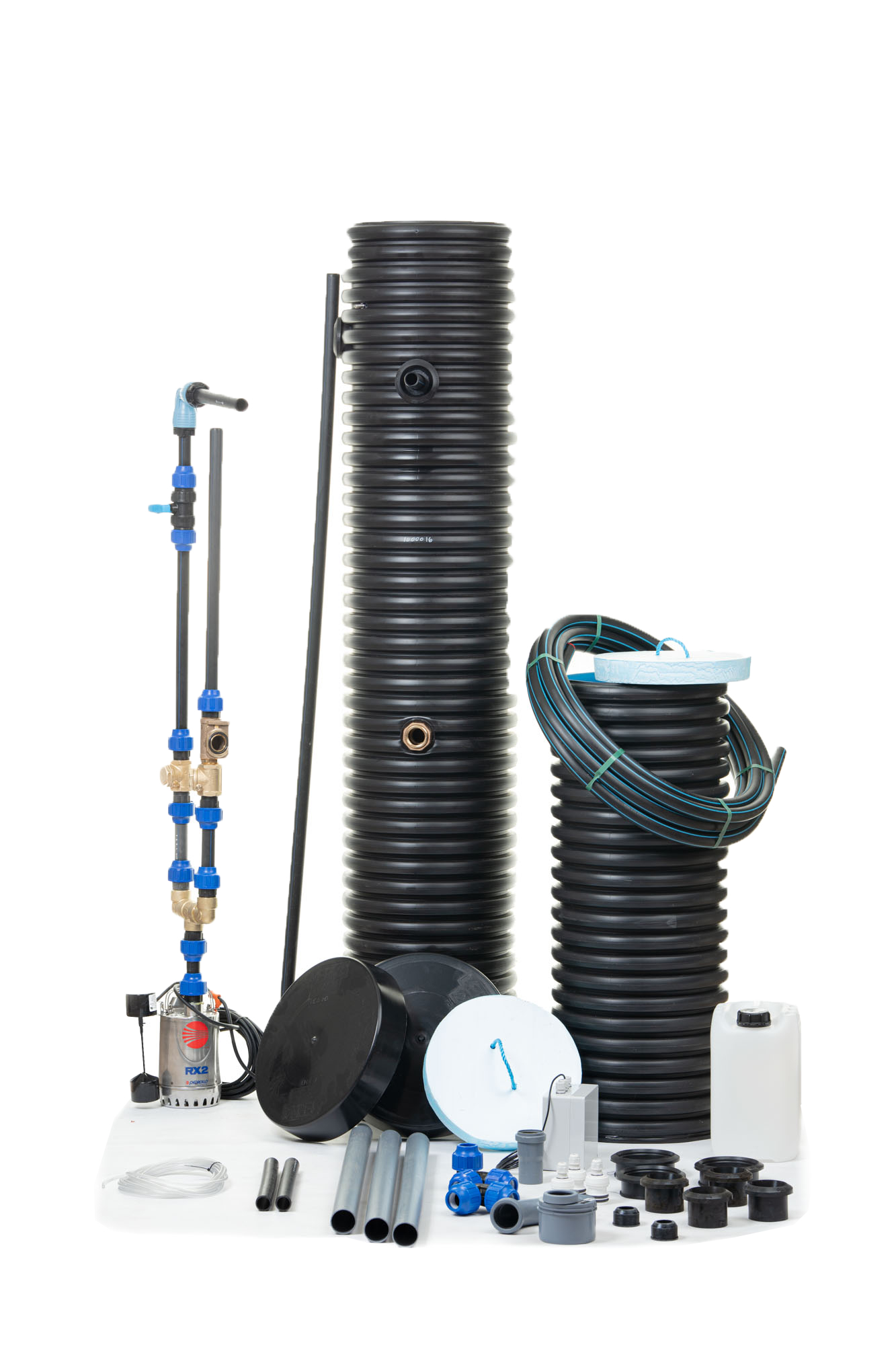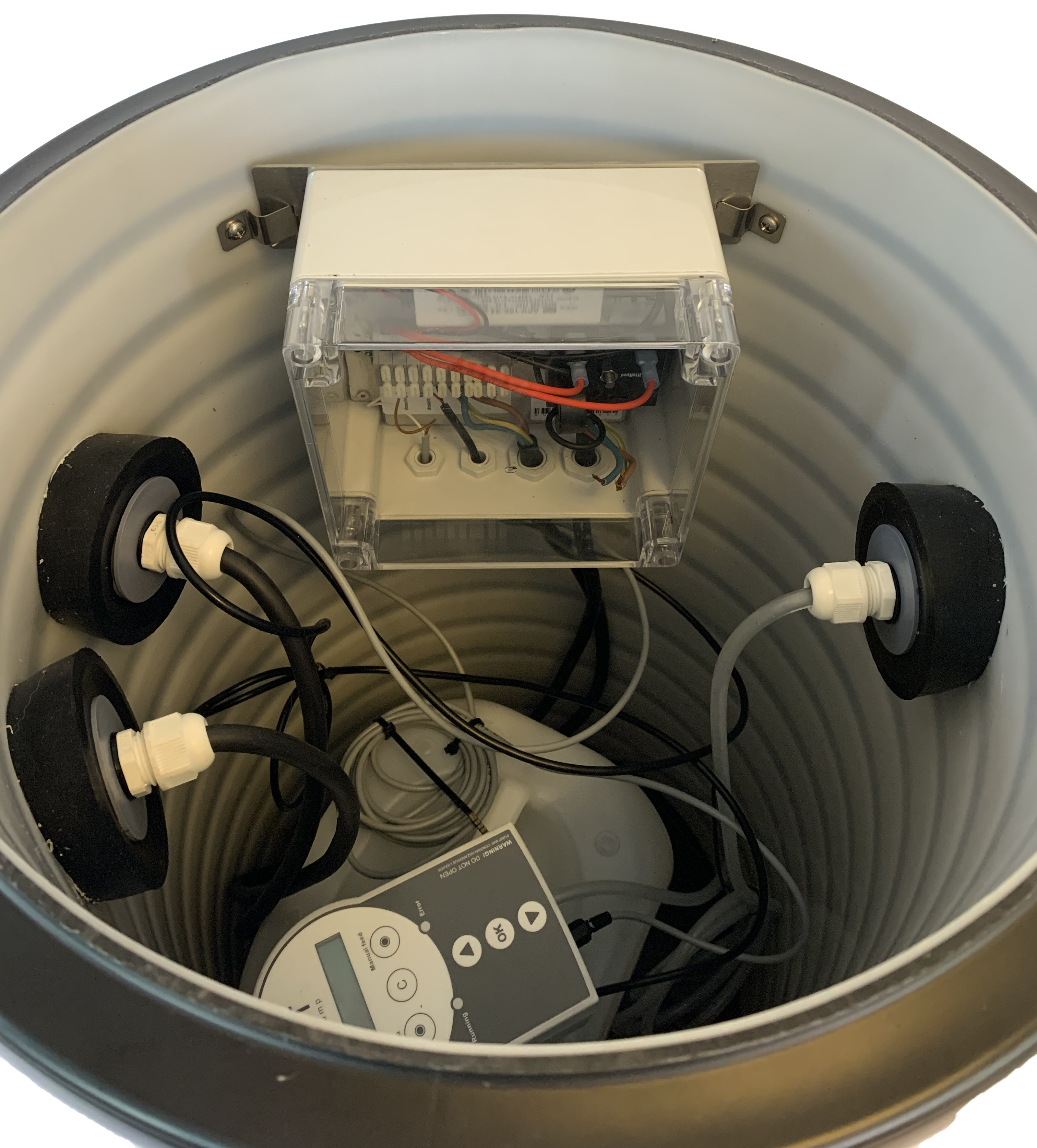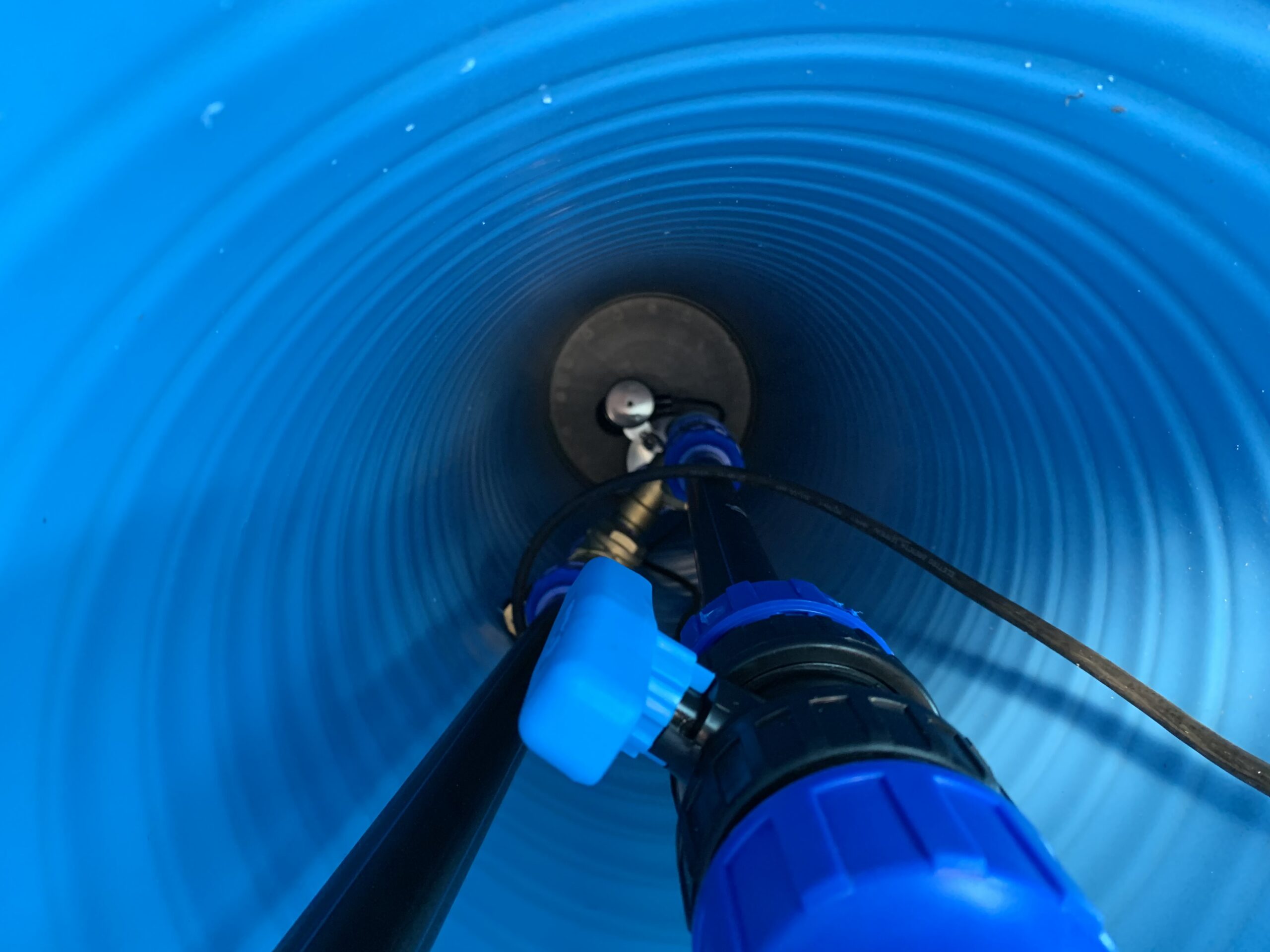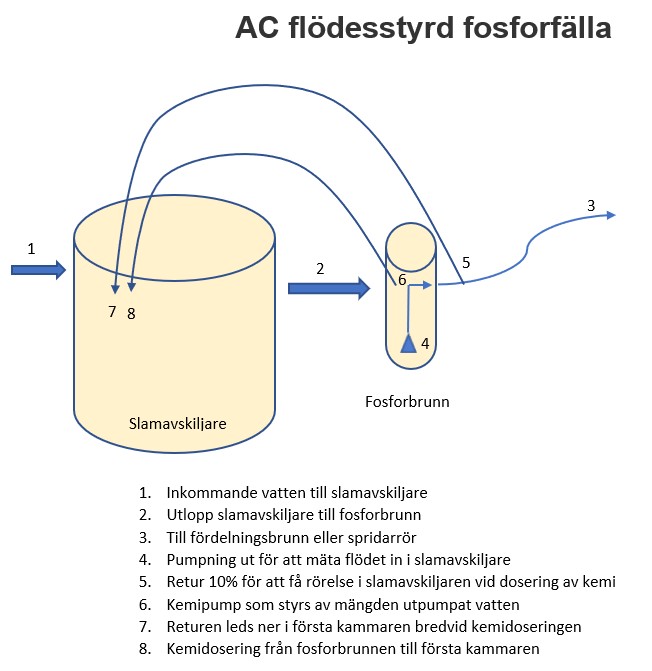Your cart is currently empty!
A solution for multiple properties, contact us for help with sizing
The pump well can handle flows up to 280 liters per minute with a lifting height of about 2 meters.
A flow-controlled phosphorus trap that doses the right amount of chemistry depending on water use in the house.
You avoid the corrosive chemical canister indoors that is found in simpler solutions.
The phosphorus trap is placed between the sludge separator and the infiltration, in addition to which you get a pumping solution from the sludge separator to the bed, which extends the life of the bed and the degree of purification.
To succeed in capturing the phosphorus with chemistry, the following is required.
The flocculant reacts with water and only seconds later it is ineffective. Since the time is very short, phosphorus in the toilet water must be met with the flocculant within 10 seconds for optimal reduction.
For the meeting between the phosphorus and the flocculant to be effective within the active time, movement is required, which takes place with a return pumping of outgoing sludge separated water together with the chemistry.
No risk of mis-dosing thanks to flow-controlled pumping.
Overdosing can result in sludge escape in the separator which clogs the infiltration. Underdosing results in no reduction of phosphorus.
Through customized dosing of flocculants, you get your plant to meet high phosphorus levels. There is no need to manually adjust the dosage after changes in the household or when leaving the house for vacation as needed on other simple chemical pumping systems.
Alarm
Alarm indicates when it is time to add new chemistry.
Easy to use
No adjustment of dosage due to changing number of people in the household or unplugging when leaving home. Everything is done automatically all the time.
Advantages
– Real flow controlled dosing
– Can handle highly variable loads up to 25 people
– Easy to install
– Never overdoses
– Easy and safe to use
– Installed outdoors, no corrosive chemistry indoors
– Alarm when flocculant needs to be refilled
– Pump solution to the infiltration for better life and function
– The technology well is 600mm in diameter and 900mm high, this means that a 25 liter canister fits well.
The pump well is placed between the sludge separator and the infiltration.
The technical well is placed near the pump well, in it there are electrical cabinets, chemical pump and chemical canister to ensure a good environment.
The wastewater flows by gravity to the pump well.
All the water is pumped out from the pumping well and in this way the right volume of chemical is obtained to be dosed to the sludge separator.
Approximately 10% of the pumped water is returned to the sludge separator to create movement of the water in the sludge separator so that the chemistry can be mixed effectively
Buy to chemistry PAX XL 60
You should not compromise on the size of the sludge separator, the hydraulic properties when using chemistry become much more difficult for the sludge separator so you must get a slower flow otherwise the risk of sludge escape is great.
It does not help to have several emptyings, but the size should be double the normal.
A solution for multiple properties, contact us for help with sizing
The pump well can handle flows up to 280 liters per minute with a lifting height of about 2 meters.
A flow-controlled phosphorus trap that doses the right amount of chemistry depending on water use in the house.
You avoid the corrosive chemical canister indoors that is found in simpler solutions.
The phosphorus trap is placed between the sludge separator and the infiltration, in addition to which you get a pumping solution from the sludge separator to the bed, which extends the life of the bed and the degree of purification.
To succeed in capturing the phosphorus with chemistry, the following is required.
The flocculant reacts with water and only seconds later it is ineffective. Since the time is very short, phosphorus in the toilet water must be met with the flocculant within 10 seconds for optimal reduction.
For the meeting between the phosphorus and the flocculant to be effective within the active time, movement is required, which takes place with a return pumping of outgoing sludge separated water together with the chemistry.
No risk of mis-dosing thanks to flow-controlled pumping.
Overdosing can result in sludge escape in the separator which clogs the infiltration. Underdosing results in no reduction of phosphorus.
Through customized dosing of flocculants, you get your plant to meet high phosphorus levels. There is no need to manually adjust the dosage after changes in the household or when leaving the house for vacation as needed on other simple chemical pumping systems.
Alarm
Alarm indicates when it is time to add new chemistry.
Easy to use
No adjustment of dosage due to changing number of people in the household or unplugging when leaving home. Everything is done automatically all the time.
Advantages
– Real flow controlled dosing
– Can handle highly variable loads up to 25 people
– Easy to install
– Never overdoses
– Easy and safe to use
– Installed outdoors, no corrosive chemistry indoors
– Alarm when flocculant needs to be refilled
– Pump solution to the infiltration for better life and function
– The technology well is 600mm in diameter and 900mm high, this means that a 25 liter canister fits well.
The pump well is placed between the sludge separator and the infiltration.
The technical well is placed near the pump well, in it there are electrical cabinets, chemical pump and chemical canister to ensure a good environment.
The wastewater flows by gravity to the pump well.
All the water is pumped out from the pumping well and in this way the right volume of chemical is obtained to be dosed to the sludge separator.
Approximately 10% of the pumped water is returned to the sludge separator to create movement of the water in the sludge separator so that the chemistry can be mixed effectively
Buy to chemistry PAX XL 60
You should not compromise on the size of the sludge separator, the hydraulic properties when using chemistry become much more difficult for the sludge separator so you must get a slower flow otherwise the risk of sludge escape is great.
It does not help to have several emptyings, but the size should be double the normal.







